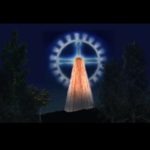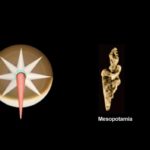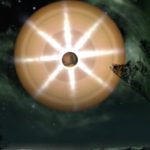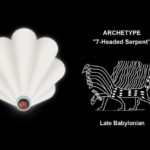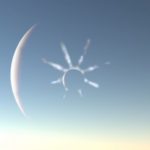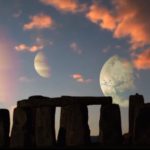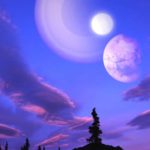Well-populated and advanced, not the lead-melting hell propaganda claims, this planet has been home to billions of people for as many years.
–
Table of Contents:
- Spec’s
- History Milestones
- Sky Views When the Worlds Were Closer (Images Begin)
- Venus Today
–
Planet Info:
The surface of this world is mostly wrinkly volcanic plains. If atmospheric water was returned in large enough quantities to the surface, the result would be mostly islands amidst a world ocean, with two large continents; Aphrodite Terra, which would be about the size of Africa, and Ishtar Terra, which would be about the size of Australia. With a few terraforming changes, Venus could be a very pleasant place to be.
| Designations | |||||||||||||
|---|---|---|---|---|---|---|---|---|---|---|---|---|---|
| Pronunciation | /ˈviːnəs/ ( |
||||||||||||
| Adjectives | Venusian or (rarely) Cytherean, Venerean | ||||||||||||
| Orbital characteristics[2][3] | |||||||||||||
| Epoch J2000 | |||||||||||||
| Aphelion |
|
||||||||||||
| Perihelion |
|
||||||||||||
|
|||||||||||||
| Eccentricity | 0.006772[4] | ||||||||||||
| 583.92 days[2] | |||||||||||||
|
Average orbital speed
|
35.02 km/s | ||||||||||||
| 50.115° | |||||||||||||
| Inclination |
|
||||||||||||
| 76.680°[4] | |||||||||||||
| 54.884° | |||||||||||||
| Satellites | None | ||||||||||||
| Physical characteristics | |||||||||||||
|
Mean radius
|
|
||||||||||||
| Flattening | 0[6] | ||||||||||||
|
|||||||||||||
| Volume |
|
||||||||||||
| Mass |
|
||||||||||||
|
Mean density
|
5.243 g/cm3 | ||||||||||||
|
|||||||||||||
| 10.36 km/s (6.44 mi/s)[8] | |||||||||||||
|
Sidereal rotation period
|
−243.025 d (retrograde)[2] | ||||||||||||
|
Equatorial rotation velocity
|
6.52 km/h (1.81 m/s) | ||||||||||||
| 2.64° (for retrograde rotation) 177.36° (to orbit)[2][note 1] |
|||||||||||||
|
North pole right ascension
|
|
||||||||||||
|
North pole declination
|
67.16° | ||||||||||||
| Albedo | |||||||||||||
|
|||||||||||||
| −4.92 to −2.98[12] | |||||||||||||
| 9.7″–66.0″[2] | |||||||||||||
| Atmosphere | |||||||||||||
|
Surface pressure
|
92 bar (9.2 MPa) | ||||||||||||
| Composition by volume |
|
||||||||||||
|
|||||||||||||
Further details here.
–
History Milestones:
There are many more noteworthy events in the Venusian records. Ask an educated member of one of the civilizations of this world for more details.
- The planet formed, possibly as a cluster of Earth-like realms as the original Midgard grew from Yggdrasil back in this ultra-ancient time.
- An Earth-like (‘garden world’) environment was the norm, possibly before even Mars had one.
- For an estimated 600,000,000 years, the paradisaical conditions on Venus changed into what they are today.
- Life and civilizations migrated to underground and to the upper cloud layers, learning to work well with the surface climate changes.
- Rumors are starting to be leaked that the current appearance of Venus’s atmosphere and surface conditions were created with powerful science/magic as a clever way of deterring any uninvited beings who might surely seek to force their will upon this world with such a paradise hidden in its past and other times; the extreme beauty of environments and women here may have been (and still be?) comparable to those of Vanaheim; the Vanir, such as Freyja.
The glow of this world may actually be due to the extreme level of beauty and ‘higher vibrations’ generated naturally by the inhabitants, rather than by what modern scientists have guessed and claimed. Imagine a world full of Vanir, loving to the extreme, with many fairy/firefly-like people similar to Tinkerbell. (And, on that note, “maybe” that is why the Sun is even brighter; even more of these perfectly-balanced, perfectly-loving, perfectly-beautiful, ancient and timeless elementals.)
There is more to the story about why Venus is the ‘hottest’ and ‘brightest’ in our system. There is more behind why it is called ‘sister planet’. See if you can find out why.
…
c.500,000,000 AD: (Lovecraft timeline) The first primitive life develops on Venus. One Venusian is among those that exchanges minds with the Great Race of Yith.
*There was advanced life before, of course, just like on all worlds; people started off as gods (the most advanced possible). They never devolved/degenerated on this world until much later (as they weren’t invaded/corrupted by primitive beings such as humans).
…
2024 January note: A Different Theory on the Formation, Age, and Effects of This World
In the Worlds in Collision book’s preface, according to this Wikipedia page, Velikovsky summarizes his arguments:
- “Worlds in Collision is a book of wars in the celestial sphere that took place in historical times. In these wars the planet Earth participated too. […] The historical-cosmological story of this book is based in the evidence of historical texts of many people around the globe, on classical literature, on epics of the northern races, on sacred books of the peoples of the Orient and Occident, on traditions and folklore of primitive peoples, on old astronomical inscriptions and charts, on archaeological finds, and also on geological and paleontological material.”
The book proposes that Venus formed inside of Jupiter, and that around the 15th century BCE, it was ejected from Jupiter as a comet or comet-like object and subsequently passed near Earth, though an actual collision with the Earth is not mentioned. In doing so it changed Earth’s orbit and axial inclination, causing innumerable catastrophes which were identified in early mythologies and religious traditions from human civilizations around the world. Fifty-two years later, it again made a close approach, stopping the Earth’s rotation for a while and causing more catastrophes. Then, in the 8th and 7th centuries BCE, Mars (itself displaced by Venus) made close approaches to the Earth; this incident caused a new round of disturbances and disasters. After that, the current “celestial order” was established. The courses of the planets stabilized over the centuries and Venus gradually became a “normal” planet.
These events led to several key statements:
Venus must be still very hot as young planets radiate heat.
Venus must be rich in petroleum and hydrocarbon gases.
Venus has an abnormal orbit in consequence of the unusual disasters stemming from its planetary origins.
Velikovsky suggested some additional ideas that he said derived from these claims, including:
- Jupiter emits radio noises.
- The magnetosphere of the Earth reaches at least up to the Moon.
- The Sun has an electric potential of approximately 1019 volts.
- The rotation of the Earth can be affected by electromagnetic fields.
Velikovsky arrived at these proposals using a methodology which would today be called comparative mythology – he looked for concordances in the myths and written histories of unconnected cultures across the world, following a literal reading of their accounts of the exploits of planetary deities. He argues on the basis of ancient cosmological myths from places as disparate as India and China, Greece and Rome, Assyria and Sumer. For example, ancient Greek mythology asserts that the goddess Athena sprang from the head of Zeus. Velikovsky identifies Zeus (whose Roman counterpart was the god Jupiter) with the planet Jupiter and Athena (the Roman Minerva) with the planet Venus. This myth, along with others from ancient Egypt, Israel, Mexico, etc. are used to support the claim that “Venus was expelled as a comet and then changed to a planet after contact with a number of members of our solar system.” (Velikovsky 1972:182).
–
Sky Views When the Worlds Were Closer:
Venus was created long after the Earth; Uranus came after the Earth, then Mars and Saturn, and at some point after them… Venus emerged from Saturn’s (then much thicker/wider/larger) atmosphere. Like Saturn back then, Venus was aglow –though it had not quite enough mass to be a dwarf-star like its parent. Due to its then-proximity to Saturn, it shared the closest permanent energy-bridge, the two worlds’ magnetospheres keeping the other’s more like a dimmer version of the Sun (which also didn’t exist back in this Age). As another world began to form inside the mass-reduced Saturn, Venus began to shift farther away, though all the worlds along with it remained locked in a straight line, thanks to this early solar-system arrangement. When the newer worlds began to exit Saturn, that gas-giant lost its ability to function as a mass-rich central-star; its light diminished, and then its wide field of warmth, followed by a cooling of the worlds once sheltered by it. The Venusian atmosphere, originally so thick and Saturn-like, collapsed around the little glowing world, and the rest is history.
–
Venus Today:
–







